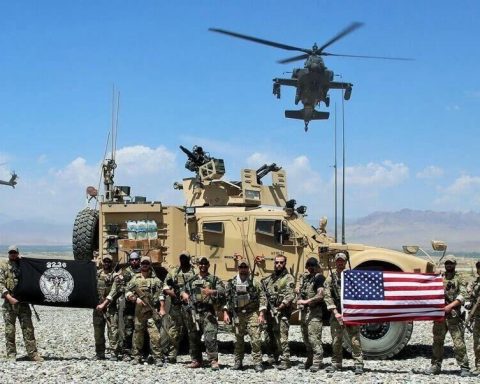The 10th Mountain Division is a light infantry division in the United States Army. They are based at Fort Drum, New York. It is a subordinate unit of the XVIII Airborne Corps. Designated as a mountain warfare unit, the division is the only one of its size in the U.S. military to receive intense specialized training for fighting in mountainous and arctic conditions. Since 2001, the 10th Mountain Division has been the most deployed unit in the United States Military.
The 10th Mountain Division motto is “Climb to Glory.”
Introduction
Initially, the 10th Mountain Division (Light Infantry) of the United States Army was constituted as a unique mountain warfare unit. It was the only unit of its size in the United States Army to specialize in fighting in mountainous and arctic conditions, thus earning the division the “MOUNTAIN” tab. Today, the division retains its mountain designation for historical purposes and is organized as a light infantry division. They are no longer a mountain unit.
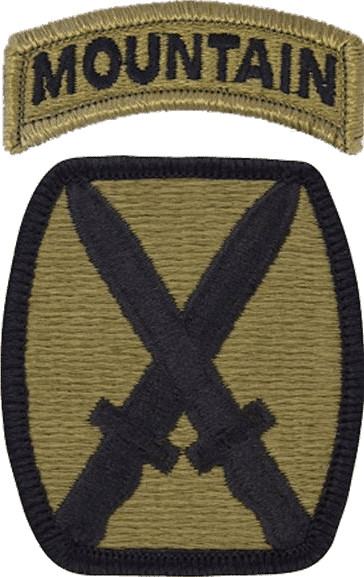
The primary purpose of a light infantry unit is to be able to move to combat quickly. And because the 10th Mountain Division doesn’t have tanks, Bradleys, Strykers can deploy quicker than most army units. And as a result, 10th Mountain is among the most deployed units in the Army. It was the first regular army unit to get to Afghanistan.
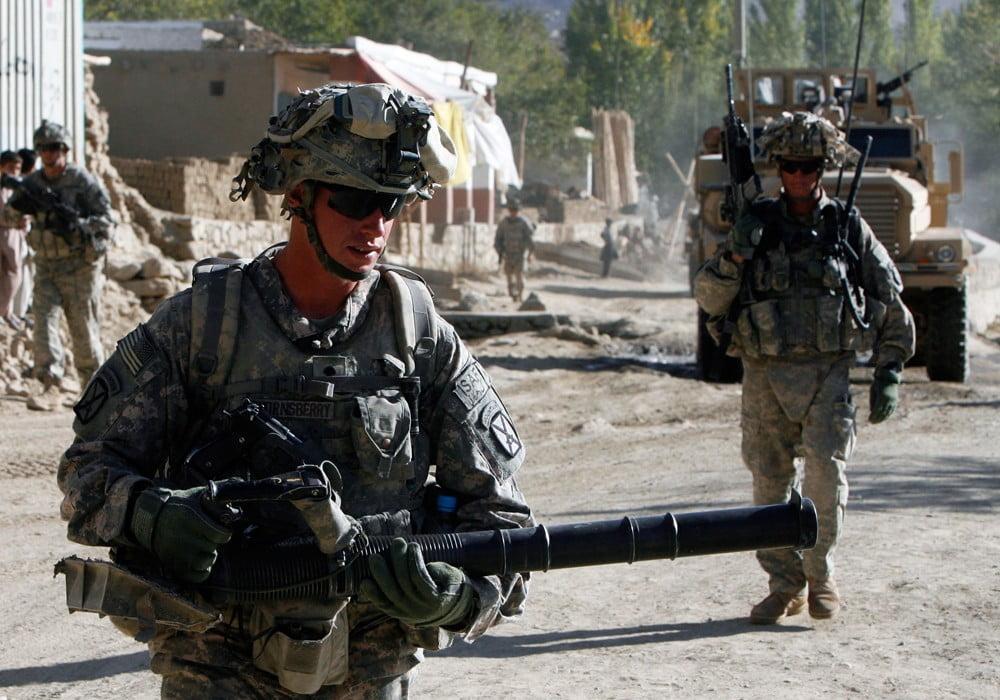
History
Originally founded as the 10th Light Division (Alpine) in 1943, the division was redesignated the 10th Mountain Division in 1944 and fought in the mountains of Italy in some of the roughest terrains in the country under heavy fire and conditions.
Many of the doctrine writers and leaders were civilian mountaineers, skiers, or search and rescue. Initial training was held in and around Stowe, Vermont. Even today, the division’s history is seen throughout the town. On one of the trailheads to Mount Mansfield, there is a monument to the 10th troopers.
They trained on Mansfield and Smuggler’s Notch. The division had its first headquarters at Camp Carson, Colorado, just outside of Colorado Springs. About 3 hours west of Camp Carson is the remains of Camp Hale just outside of Leadville. Camp Hale is where the 10th trained for their mission in the Italian Alps. If you went there now, you would see a monument to the 10th. Of course, it’s a bit of a climb to get there.
The division was deactivated following world War II, only to be reactivated and redesigned as the 10th Infantry Division in 1948. It first acted as a training division and, in 1954, was converted to an entire combat division and sent to Germany before being deactivated again in 1958.
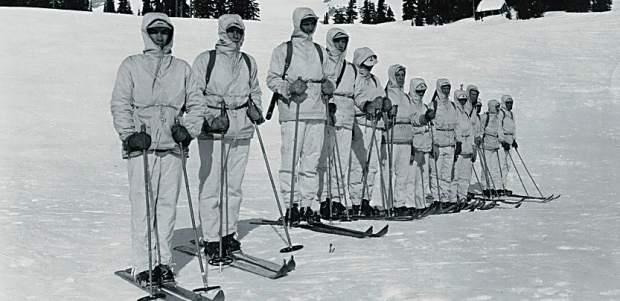
Reactivated again in 1985, the division was designated the 10th Mountain Division (Light Infantry) to tie it to the World War II division historically and better describe its current disposition. Since its reactivation, the division and elements of the division have been deployed numerous times.
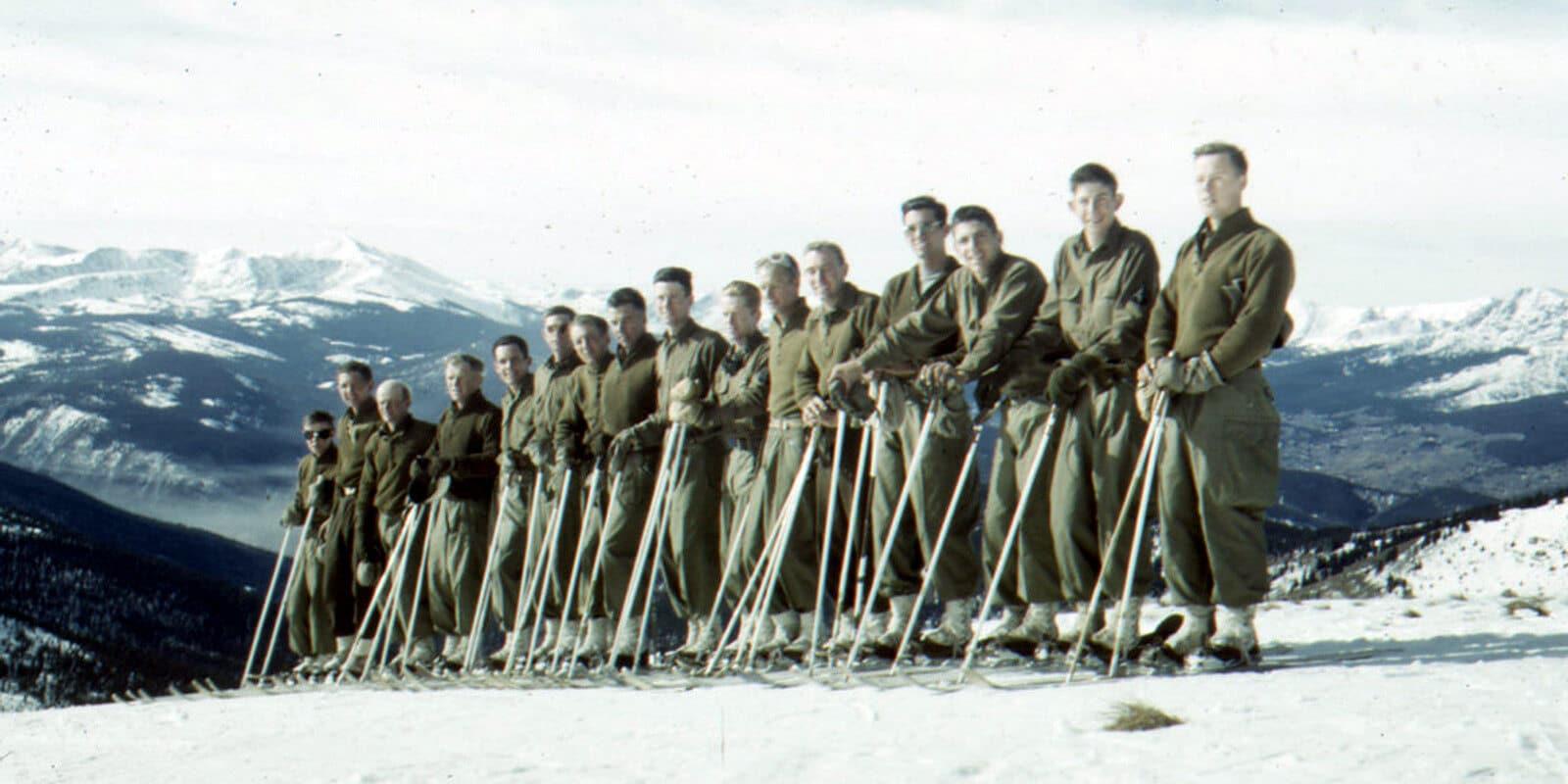
Organization
Since the unit’s reactivation, it has gone through a few reorganizations. Although it has essentially never lost its basic appearance and responsibilities, the organizational structure has changed over time. In the picture below, you can find an example of a 1989 organization.
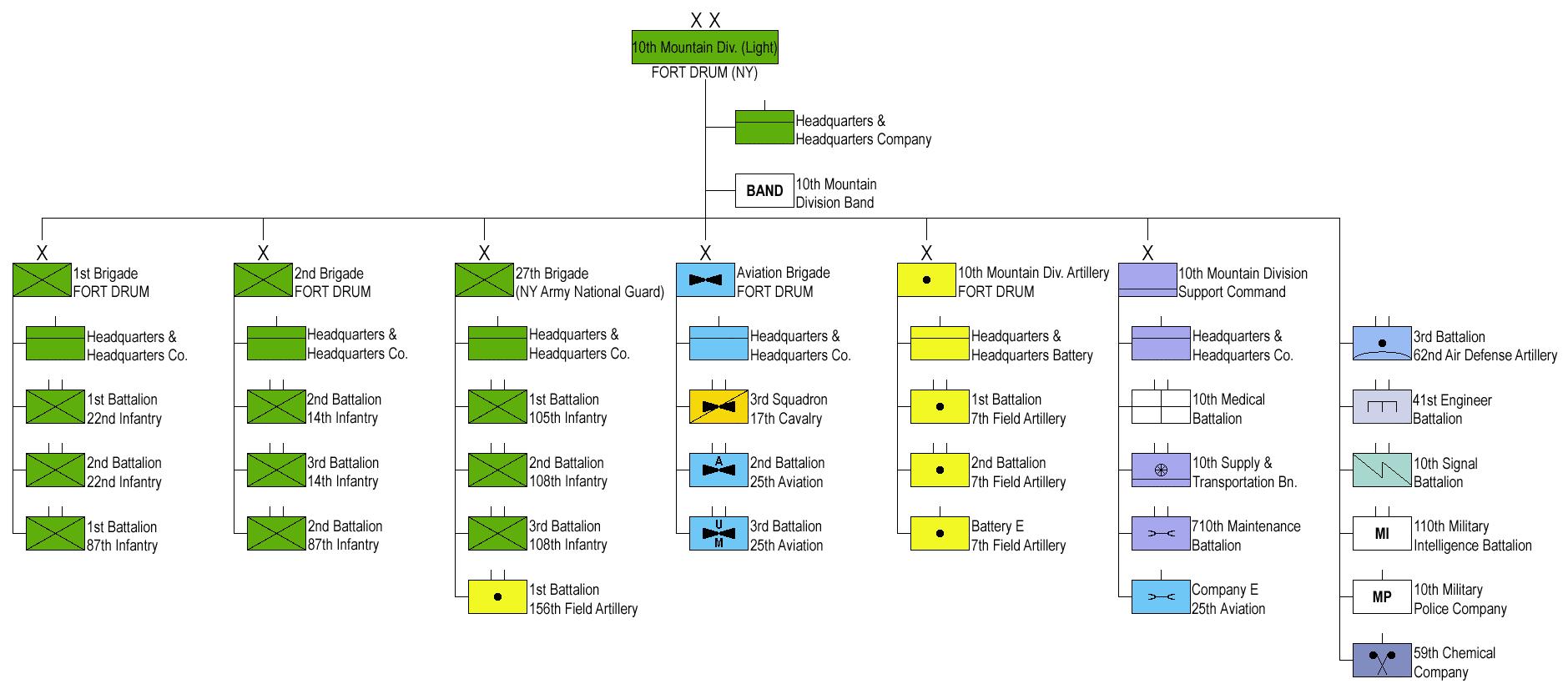
On the return of the division headquarters and 1st Brigade, the 10th Mountain Division began the process of transformation into a modular division. On September 16, 2004, the division headquarters finished its shift, adding the 10th Mountain Division Special Troops Battalion.
The 1st Brigade became the 1st Brigade Combat Team, while the 3rd Brigade Combat Team, 10th Mountain Division, was activated for the first time. In January 2005, the 4th Brigade Combat Team, 10th Mountain Division, was activated at Fort Polk, Louisiana. 2nd Brigade Combat Team would not be transformed until September 2005, pending deployment to Iraq.
In late 2004, the 2nd Brigade Combat Team was deployed to Iraq supporting Operation Iraqi Freedom. The 2nd Brigade Combat Team undertook combat operations in western Baghdad, an area of responsibility which included Abu Ghraib, Mansour, and Route Irish. It returned to the U.S. in late 2005. Around that time, the 1st Brigade Combat Team deployed back to Iraq, staying in the country until 2006.
The organizational structure of the 10th Mountain Division
There are a division headquarters and headquarters battalion, three infantry brigade combat teams, division artillery, a combat aviation brigade, a division sustainment brigade, and an associated brigade combat team from the 36th Infantry Division.
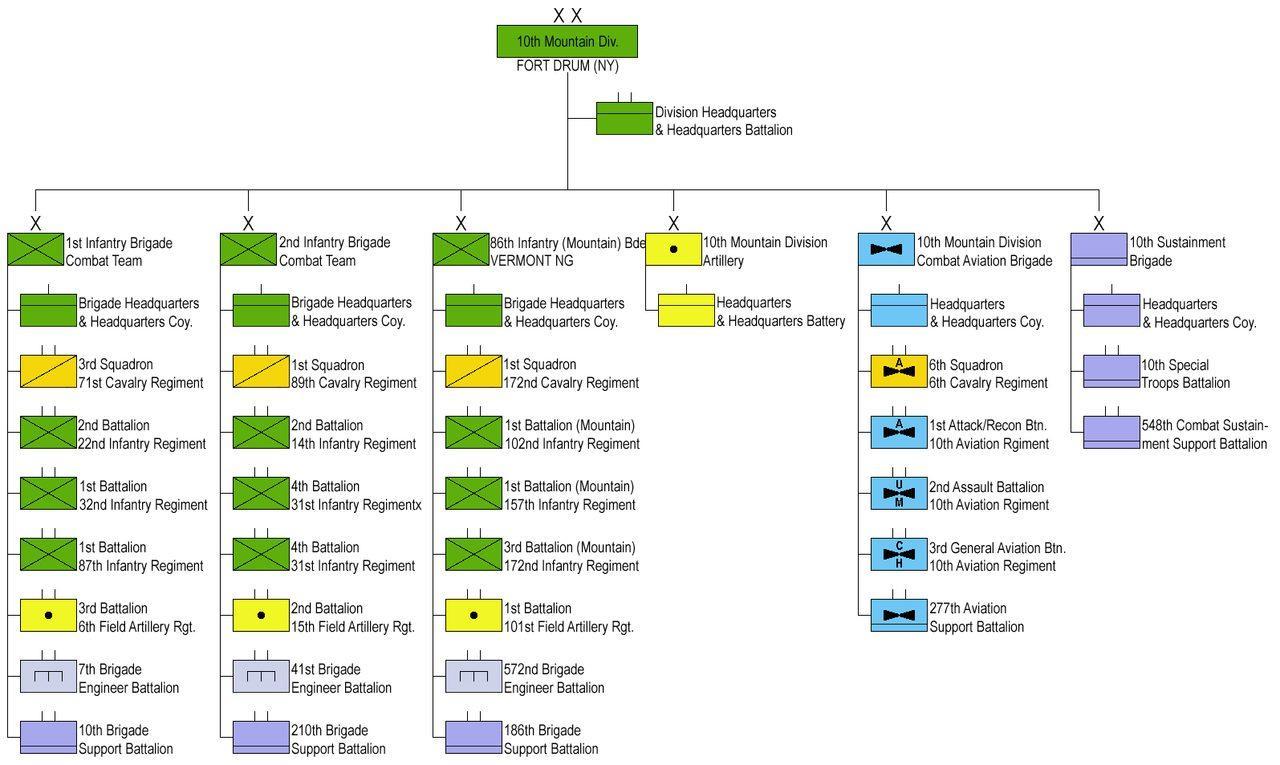
Operations since last reactivation (1985)
The 10th Mountain Division (Light Infantry) has been involved in:
- Operation Desert Storm (Saudi Arabia)
- Hurricane Andrew disaster relief (Homestead, Florida)
- Operation Restore Hope and Operation Continue Hope (Somalia)
- Operation Uphold Democracy (Haiti)
- Operation Joint Forge (Bosnia and Herzegovina)
- Operation Joint Guardian (Kosovo)
- several deployments as part of the Multinational Force and Observers (Sinai Peninsula)
- Operation Iraqi Freedom (Iraq)
- Operation Enduring Freedom (Afghanistan)
Since 2001, the division and its four combat brigades have seen over 20 deployments to both Iraq and Afghanistan in support of Operation Iraqi Freedom and Operation Enduring Freedom, respectively.
10th Mountain Division vs. other Army units
Among infantry in the U.S. Army, the 10th Mountain is considered part of what we call the big 3. The big three consist of:
- 82nd Airborne Division
- 101st Airborne Division
- 10th Mountain Division
The general mentality amongst Army Personnel is that these three divisions are the best in the Army, and honestly, in my personal experiences, this holds. Those three units tend to have their soldiers to higher standards. 10th Mountain Division is considered a Tier 3 Conventional Forces. They are not Special Operations Forces but can be called a support force.
10th Mountain Division vs. Army Rangers
The 10th Mountain Division and the 75th Rangers cannot even compare to each other. They have different missions and capabilities. Long story short, the 10th specializes in mountain warfare, cold weather operations and is a rapidly deployable unit. By contrast, the 75th Rangers are more along the lines of shock troopers. If you absolutely, positively need something killed, captured, or blown up right now, send in the Rangers.
With that said, the level of specialized training and funding the 75th gets isn’t comparable to what a conventional Army Unit will get. On Average and an individual level, soldiers in the 10th Mountain are nowhere near their Ranger Counterparts in terms of skills and training.
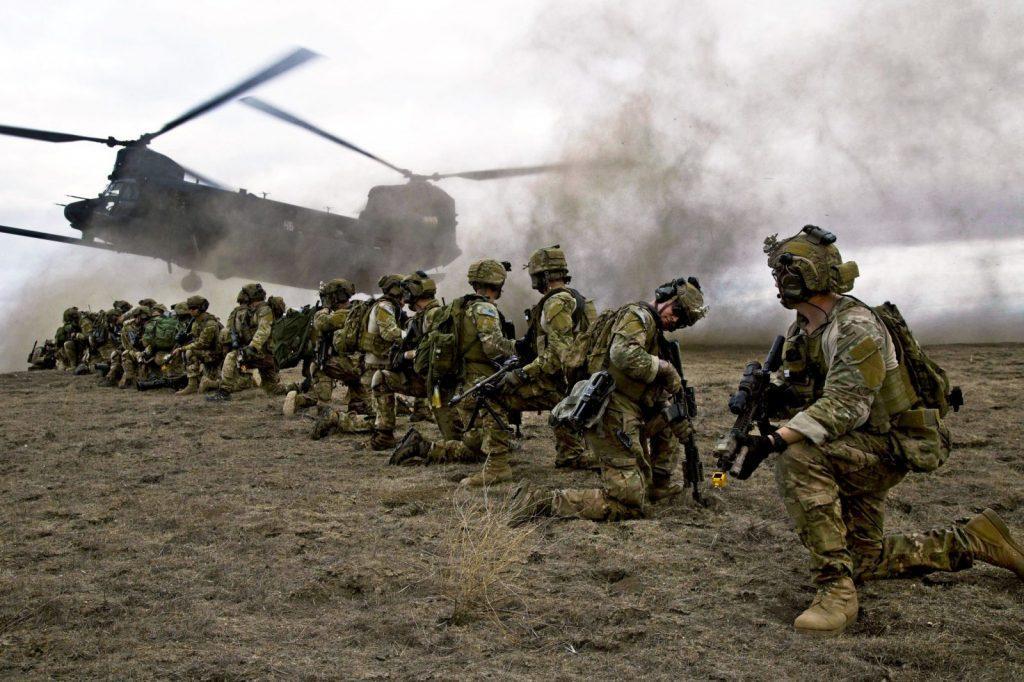
That’s not a strike against the members of the 10th mountain Division either; I’ve encountered plenty of soldiers that deployed with the 10th Mountain Division that would’ve made/could be fine Army Rangers. Ultimately, however, the training and Funding afforded to the 75th Ranger Regiment puts them in a league of their own. Even so, the 75th Ranger Regiment fills specific roles, as does the 10th Mountain. There are capabilities the 75th has that the 10th Mountain doesn’t; on the flip side, the 10th Mountain Division can do things that the 75th Ranger Regiment would be very ill Suited for.
Is the 10th Mountain Division airborne?
Typically, a unit is “airborne” if it is designed and trained to be inserted by parachute. The 10th Mountain Division indeed contains jump-qualified soldiers (i.e., parachutists), but, as an Army division, it is not “airborne.”








